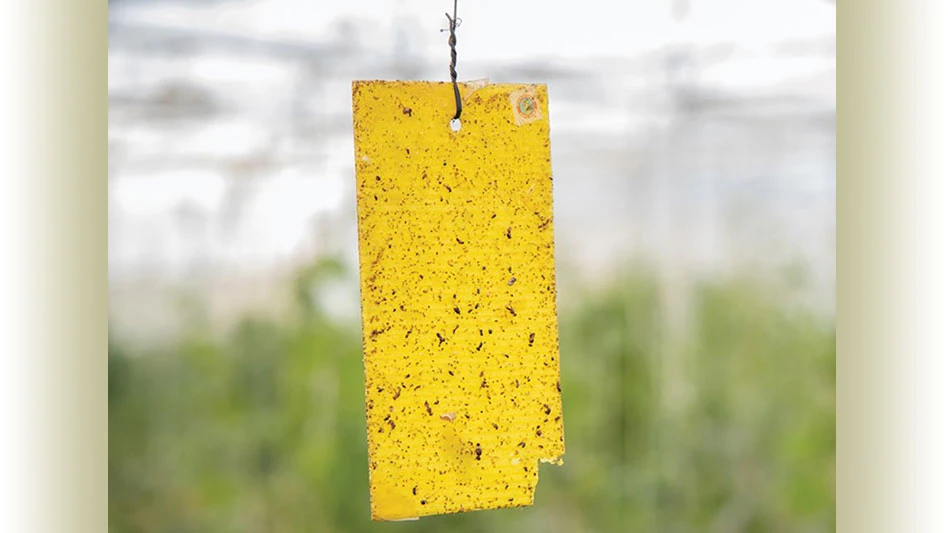

If you have pests in your greenhouse, they were likely reported by a scout.
The first thing you need to consider when you think about scouting is who’s responsible for this vital task. Some growers have full-time scouts, some have part-time scouts, but for most operations, scouting is part of someone’s responsibilities — not an entire job description on its own.
“Don’t think you have to have a paid, titled, credential scout do the scouting,” says Timothy Malinich, horticulture educator with the Ohio State University Extension’s Erie County office. “Scouts can just be people that have been empowered to go out there and look for things, see those things and report them.”
Scouts could be site managers. If a greenhouse operation has multiple production houses, it could be the lead section grower of each. It could be all employees at the greenhouse. It could be the employees on the potting line or the ones managing inventory. In many cases, it’s the applicator.
Managers can empower everyone in their organization to scout. But you need to make it part of the job description. Scouting does cost time and, through that, money. You must give the people you are empowering to scout time to scout and be flexible about when they do it.
You should also provide some basic training on what scouting entails. Though even without formal training, if an employee sees something that doesn’t look normal, they can report it and you can use it as a point of data.
Every employee likely has one of the most powerful scouting tools right in their pocket: the smartphone.
“They can take a picture and text somebody,” says Thomas DeHaas, another agriculture and natural resources educator at the OSU Extension’s Erie County office. “If you have a central person who gets that info, you’ve already improved your scouting program 100 percent.”
DeHaas suggests growers think outside the box to incentivize employees to scout in addition to their responsibilities.
“If it’s worth doing, it’s worth paying for,” he says. “Giving people time to do it is going to cost you money, but it saves money too.”
Scouting tools
The tools of the trade can vary widely in price and effectiveness. If you ask a large amount of your employees to scout, you won’t outfit all of them with Canon Rebels and pricey magnifying lenses. But everyone should at least have the basics listed below. Here are some options:
Basic tools: smartphone, loupe, pen and waterproof paper, pruners, marking tape, flags, acetone with cotton balls, hand sanitizer, map (to mark where pest was found).
Midrange tools: digital magnifier, EC/pH meter, clip-on lenses for smartphone (ex. CamKix).
High-end tools: microscope, “real” camera (D-SLR style), laptop for image manipulation, clip-on lenses like olloclip.

Explore the September 2022 Issue
Check out more from this issue and find your next story to read.
Latest from Greenhouse Management
- Anthura acquires Bromelia assets from Corn. Bak in Netherlands
- Top 10 stories for National Poinsettia Day
- Langendoen Mechanical hosts open house to showcase new greenhouse build
- Conor Foy joins EHR's national sales team
- Pantone announces its 2026 Color of the Year
- Syngenta granted federal registration for Trefinti nematicide/fungicide in ornamental market
- A legacy of influence
- HILA 2025 video highlights: John Gaydos of Proven Winners





